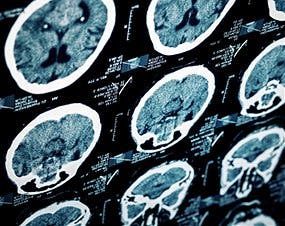One of the biggest problem in psychiatry today, though the doctors practicing it regularly hand out medication and treatment, is the lack of clear biological markers. Basically, most of the diagnosis is made based on reported and evaluated symptoms that might not hint towards the real mental affliction the said person is suffering from. Brains scans offer the best solution towards identifying biological markers for mental disorders, but while they’re from being ready to be massively employed in the psychiatric infrastructure, we’re pleased to hear strides forward are being made.

“Bipolar disorder and borderline personality disorder are difficult to distinguish because emotion dysregulation is a key feature of both,” says Malhi.
Those with bipolar are typically treated primarily with medication, while borderline personality disorder is treated psychotherapeutically. As you can read, the two treatments are distinctly different and a misdiagnosis means a person will not get the treatment he needs.
For the study, 16 non-depressed bipolar patients, 13 borderline personality disorder patients and 14 controls with no mental illness were invited for a brain-scan procedure. While the brain was being scanned they undertook a task known as the emotional Stroop that makes participants work and engage key networks within the brain. This was adapted such that the participants had to focus on an emotional response, which revealed key regulatory circuits in the brain at work.
At a closet glance, Malhi says that clear biological differences between the two disorders could be noticed.
“Patients with bipolar are able to function quite normally when well,” says Malhi.
“[But] they have to do it at the cost of extra effort in the brain.”
He likened it to the extra energy a short person would use when trying to keep pace walking with a taller person.
“The dorsomedial prefrontal cortex is critical and this is the area that they are drawing on,” says Malhi.
Borderline personality disorder patients show heightened activity in the amygdala, which is the area related to our fear response.
“It is the key node in the lower part of the brain that co-ordinates emotional understanding … and they are not able to regulate it,” he says.
Malhi acknowledges the huge potential brain scan technology has in treating disorders, but claims that there will be still a long time until the almost century old psychiatric procedure tosses its current habits, which still relies on a questionnaire to diagnose mental disorders, some severe.
The findings were reported in the journal Molecular Psychiatry.






